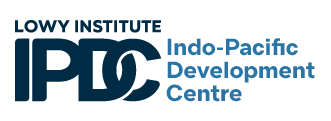Azerbaijan, an oil-rich autocracy in Central Asia, has landed the task of hosting this year’s UN climate talks, known formally as the Conference of the Parties to the United Nations Framework Convention on Climate Change, or more commonly as COP29. With more than 90 per cent of Azerbaijan’s exports tied to planet-warming oil and gas, expectations for the nation’s leadership in the negotiations from 11–22 November are understandably limited.
Last year’s COP28 in Dubai, another carbon-intensive exporter, concluded with nearly 200 countries agreeing to shift away from fossil fuels – a consensus hailed by some as “the beginning of the end” for the fossil fuel era. But no meaningful progress has followed, and Azerbaijan’s agenda for COP29 makes no mention of the agreement. Failure to build on last year’s deal will be a significant setback.
One possible decision to watch out for is the selection of the host for COP31 in 2026.
Complicating matters further is the looming US presidential election, which comes just days before COP29 convenes. Donald Trump’s 2016 win overshadowed climate change negotiations that year with his promise to withdraw from the Paris Agreement, a decision later reversed by President Joe Biden. Now Trump is back on the ballot, raising fears that the world’s second-largest emitter may once again exit the world stage on climate. A Kamala Harris victory, however, would at least provide reassurance that the United States won’t take a backwards step.
Despite geopolitical headwinds, several key issues are expected to dominate COP29, with climate finance leading the agenda. Here’s what I’ll be watching for.
- The New Collective Quantified Goal (NCQG) will be the main deliverable this year, setting the future direction of global climate finance. Coming into effect from 2025, the goal will replace the existing US$100 billion-a-year pledge made in 2009 by rich countries to support climate initiatives in poorer ones. But almost every detail – how much, who pays, who receives it, how long it will last for, whether funds will come as grants or loans, and whether it will include funding for Loss and Damage – is in dispute.
- COP29 may finally establish rules on international carbon trading under Article 6 of the Paris Agreement after years of stalled talks. The agreement would allow countries to trade carbon credits to achieve their national climate targets. Nevertheless, several challenges remain, including determining what qualifies as a carbon credit, the level of transparency required for transactions, and deciding between establishing a centralised registry or relying on national systems to issue and oversee credits.
- Azerbaijan is also calling for new financial pledges for climate action and has unveiled a voluntary fund for contributions from oil and gas-producing countries and companies.
- COP29 will take steps towards developing a universal green taxonomy with the aim to establish standardised criteria for sustainable investments on a global scale. Resolving inconsistencies across national frameworks, such as whether natural gas can be considered a transition fuel, will be a key challenge.
- As for Loss and Damage, a key achievement of the negotiations last year was the launch of the new Fund for responding to Loss and Damage to support developing countries in managing the consequences of climate change. But there are still crucial details to work out, such as scaling up financial contributions to the fund and clarifying its role within the new finance goal.
- Transparency and reporting will also be a focus at COP29. Azerbaijan has introduced The Baku Global Climate Transparency Platform to assist countries in fulfilling their reporting obligations, with the first Biennial Transparency Reports due shortly after the summit concludes. These reports are critical for documenting countries’ progress on emissions reductions, climate policies and financial contributions, holding countries accountable for their commitments.
- Finally, one possible decision to watch out for is the selection of the host for COP31 in 2026. Australia, with backing from the United States, United Kingdom, France and Germany, is a leading contender, proposing to co-host the summit alongside climate-vulnerable Pacific Island nations. But Türkiye is also still in the running, so Australia will need to gather further support within the “Western Europe and Others” regional group of the United Nations to secure the hosting rights.


